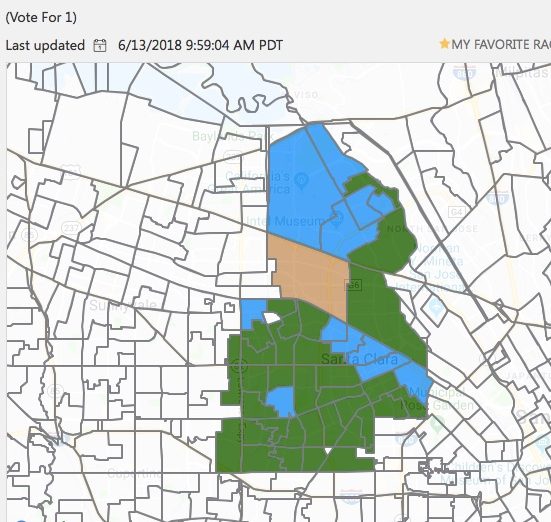Although Santa Clara voters gave Measure A the thumbs down, voting patterns on the measure in the City’s 47 precincts yields useful insights for reforming City Council elections.
Votes for and against Measure A weren’t evenly distributed through the City—proof that the homogeneity that has been claimed for the City isn’t, in fact, real.
Precincts north of 101 and those in the Old Quad tended to favor Measure A, while those between 101 and El Camino — with large concentrations of Hispanic and low income residents — and those south of the Old Quad tended to oppose it.
Yes got majorities in 14 of Santa Clara’s precincts, while No carried 30 precincts. The Measure carried 50 percent of the precincts north of El Camino Real, while No on A carried 83 percent of precincts south of El Camino. One precinct had no votes on the Measure.
Yes got its largest majority (78) in Precinct 4249 near Benton St., while No got its largest majority (107) in Precinct 4226, near Los Padres and Newhall St.
Within the north/south delineation proposed by Measure A there are geographic differences in voting patterns not reflected in — and that could be diluted by — Measure A’s proposed El Camino dividing line.
Another statistic about last week’s election is that Yes on A spent $15 for every vote they got while No on A spent $1.
Perhaps the statistic that should concern Santa Clara residents most of all is that at least half of the City’s registered voters didn’t think they had a reason to cast a ballot last week about how their City Council is elected.
You can find an interactive map on the County Registrar of Voters’ website: www.sccgov.org







And I went and found it here: https://results.enr.clarityelections.com/CA/Santa_Clara/75369/Web02.203317/#/cid/44